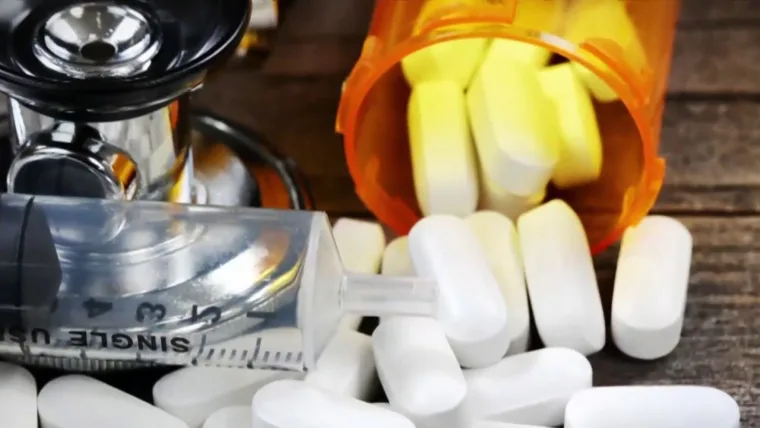A Mysterious Health Wave Is Breaking Out – Real Stats, Real Change!
In recent months, health experts across the United States have observed a surprising shift. Major risks like drug overdoses, obesity, traffic deaths, and even the national murder rate have all declined at the same time. This rare and unexpected improvement is now being referred to as a mysterious health wave breaking out.
Unlike past health alerts, this trend is positive and has sparked hope instead of fear. Communities are seeing real change, and experts are eager to understand what’s driving it and whether these encouraging trends can continue long-term.
Major Health Improvements Observed Across the Nation:
Drug Overdose Deaths Have Dropped:

America’s opioid crisis is finally seeing progress, with a 3% drop in overdose deaths between 2022 and 2023. Widespread access to naloxone and growing awareness of addiction recovery programs are making a difference. I’ve personally seen communities focus more on mental health and rehab, helping families rebuild after years of hardship.
Fewer Traffic Fatalities Despite More Driving:
Despite increased travel post-pandemic, traffic deaths have gone down. Improved vehicle safety, better road designs, and stronger awareness campaigns about safe driving are contributing factors. Cities are acting smartly, and it’s making roads safer. This improvement not only saves lives but also boosts public confidence in urban safety systems.
Obesity Rates Show a Downward Trend:
U.S. adult obesity rates have declined slightly—a big moment after years of increase. Healthier diets, fitness trends, and new medications for weight loss are helping. From my own experience, I see more people joining walks, skipping sugary drinks, and cooking at home. These small, consistent steps are showing real results.
Violent Crime and Murder Rates Are Down:
FBI data shows a significant drop in the national murder rate. After the pandemic’s chaos, safer neighborhoods are reemerging. Police outreach, youth programs, and community support are helping reduce violence. This shift feels visible where I live, where public trust is growing and fewer families are facing tragic loss.
Why Is This Health Wave So Rare and Surprising?
Usually, these types of health statistics don’t improve at the same time. For example, even if drug deaths drop, obesity might still rise. But in this case, multiple public health issues have improved together, which is extremely rare. That’s why it’s being called a mysterious health wave—because no one expected it, and no one can point to a single reason.
Experts are cautious, too. Some say the improvements may only be temporary, and full data sets can take years to confirm trends. But the current snapshot still gives people hope.
Possible Reasons Behind This Positive Trend:
Post-Pandemic Behavior Changes:
Since the pandemic, many people have changed their daily routines. Some continue to work from home, which means fewer cars on the road and more time for home-cooked meals. Others have become more conscious of their health, focusing on fitness and mindfulness.
Medical Advancements and Public Health Awareness:
Access to healthcare has slightly improved in some areas. New medications for weight loss and addiction are helping. More awareness campaigns about mental health, drug use, and traffic safety are reaching people online.
Government Programs and Local Initiatives:
Some cities and states have put stronger safety measures in place, such as improved lighting in high-crime neighborhoods or better pedestrian crossings to prevent accidents. These might seem like small steps, but when combined, they can have a powerful impact on health outcomes.
What This Wave Is Not About?
It’s important to understand that this health wave isn’t about a new illness or disease. It’s the opposite—it shows positive health trends. Some people hear the word “wave” and immediately think of a virus outbreak, but this wave is about improvement, not danger. It highlights recovery, not risk.
Instead of panic, it brings cautious optimism across medical and public health communities. There’s no mysterious infection spreading or hidden outbreak unfolding. What we’re seeing is progress in multiple areas of health. It’s a reminder that public efforts and individual choices can lead to real, measurable results.
What Challenges Still Remain Despite the Health Improvements?
Despite recent health improvements, several serious challenges continue to affect public safety and global health systems:
- Mystery Fever in Congo: A rapidly spreading unknown fever in the Democratic Republic of Congo has caused several deaths. Symptoms resemble hemorrhagic fevers, and health officials are still investigating its cause and potential risk to nearby regions.
- Measles Spike in the U.S: Due to declining childhood vaccinations, measles cases are rising across the United States. This preventable disease is resurfacing in communities with low immunization coverage, putting vulnerable populations at higher risk.
- Bird Flu Risk: H5N1 bird flu remains a major concern for global health authorities. Though rare in humans, it can spread through infected poultry, making surveillance essential to prevent a potential zoonotic outbreak.
- Weak Health Systems: Many parts of the world still lack strong healthcare infrastructure. These gaps delay outbreak responses, limit vaccine delivery, and make it difficult to protect populations during public health emergencies.
- Misinformation Spread: False health information shared on social media continues to harm public trust. Misinformation about vaccines, treatments, and diseases creates confusion and discourages people from making informed health decisions.
Why This Matters to Everyday People?
This trend isn’t just about numbers in a report. It means fewer lives lost, more people staying healthy, and families experiencing less tragedy. If the trend continues, it could ease pressure on hospitals, save healthcare costs, and lead to a stronger, healthier society.
In my view, this is a chance for individuals, communities, and leaders to build on what’s working. Instead of waiting for the next crisis, this is the right moment to support mental health services, promote wellness, and continue helping one another.
FAQs:
What makes this health wave “mysterious”?
This wave is considered mysterious because several major health statistics improved at the same time, which is rare. Usually, these trends move separately. Experts are still trying to understand how and why these positive changes happened without one specific cause linking them all.
Is this health wave happening only in big cities?
No, this health wave is not limited to big cities. Positive trends like reduced crime and better health outcomes have been reported in both urban and rural areas. It appears to be a nationwide shift, though the exact reasons may vary by region.
Could technology be helping this health wave?
Yes, technology could be playing a role. Health apps, social media awareness, virtual therapy, and telemedicine have made health resources more accessible. These tools may help people make better lifestyle choices and seek support, contributing to the overall improvement in public health trends.
How can individuals contribute to keeping this trend going?
People can help by continuing healthy habits like regular exercise, eating well, staying informed, and supporting mental health initiatives. Community involvement and responsible behavior on the road or in public spaces also strengthen these improvements and make a lasting impact nationwide.
Will this trend continue in the future?
Experts remain hopeful but cautious. Continued efforts in public health, education, and community support are needed. If these changes are maintained, the trend may last. However, economic shifts or healthcare challenges could affect whether this wave remains strong or fades away.
Conclusion:
The rise of a mysterious health wave breaking out across the U.S. marks a powerful moment of hope in an often challenging public health landscape. With multiple indicators improving at once, from reduced overdose deaths to safer streets, it signals that change is possible when communities, technology, and awareness come together.
While the future remains uncertain, this trend shows how both local efforts and national policies can lead to real progress. Sustaining this momentum will require continued commitment from individuals and systems alike.






